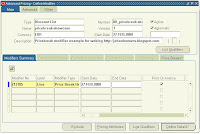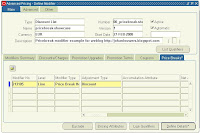 I received Toad for Oracle, version 9.0.1.8, to test some of the futures if this would be a good tool to use for developing code. I am used to work with PL/SQL developer from allround automations. However, after playing around with this version of Toad for Oracle I have to say that there are some very nice options, especially in the Optimizer part.
I received Toad for Oracle, version 9.0.1.8, to test some of the futures if this would be a good tool to use for developing code. I am used to work with PL/SQL developer from allround automations. However, after playing around with this version of Toad for Oracle I have to say that there are some very nice options, especially in the Optimizer part. After you create your code you can start to analyze your code and optimize it for different scenarios. Your original code will be checked and several other statements will be written which are all some different from the original. After Toad is finished writing the different sql statements you will be able to test them on the system and you will be presented with a graphical overview of the differences in response time. From this you can pick the version which is best applicable to your situation. The fastest response time, the less read operations, the less memory use,.....

Scaling and optimizing with Toad is now something that can be done very quickly and efficiently. The downside is that “quick” is relative. On my development machine the process was taking quite some time. However, the time you normally put into such a process of debugging and optimizing can now be used for other things. The Optimizer is a real nice option in Toad I have to admit however making it faster would be a real improvement.


















